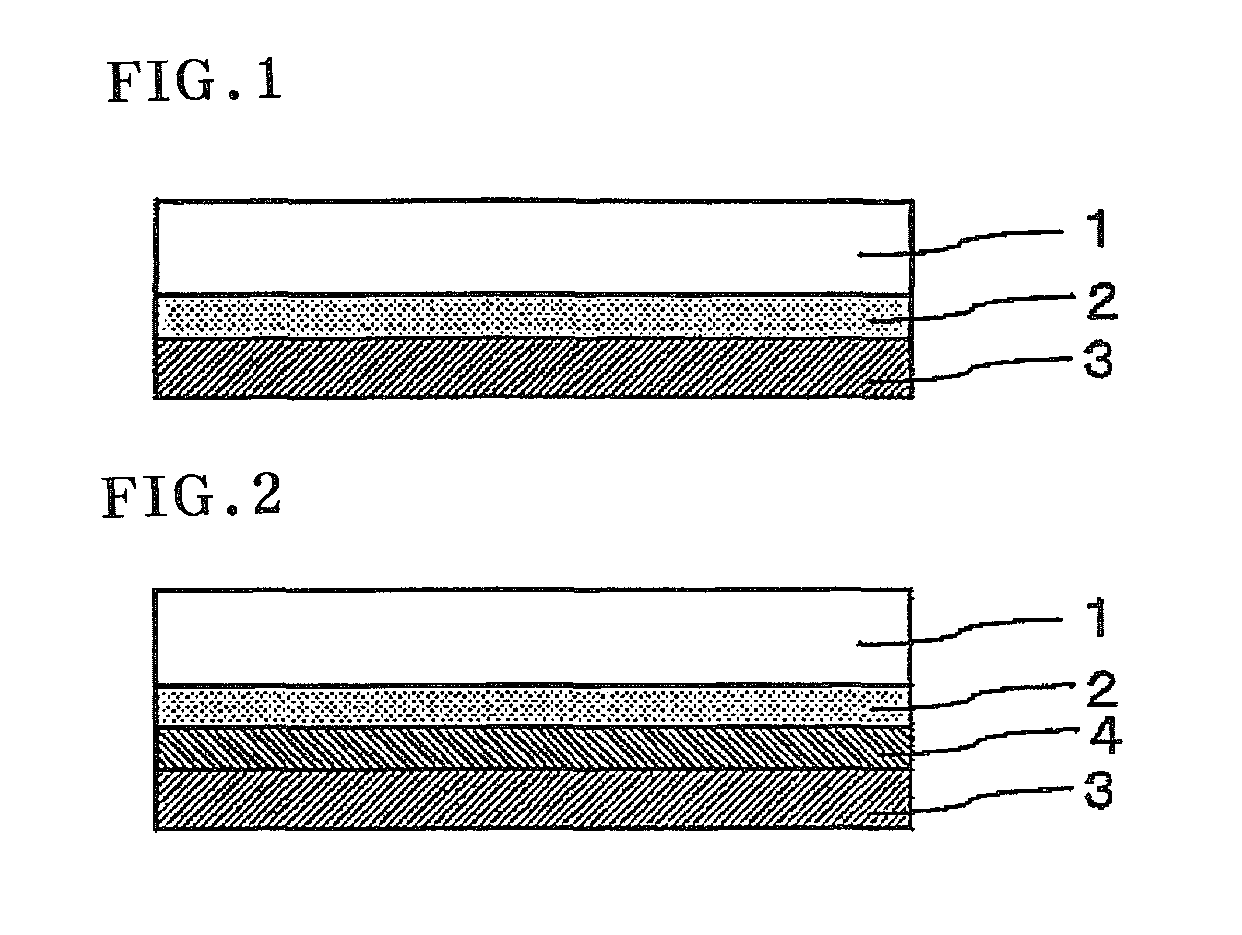Pressure-sensitive adhesive optical film and image display
a technology of pressure-sensitive adhesive and optical film, which is applied in the direction of film/foil adhesive primer layer, instruments, polarising elements, etc., can solve the problems that the polarization properties of polarizing plates are alterations, and the foaming or peeling of pressure-sensitive adhesive layers cannot be prevented, so as to maintain the dispersion stability, good dispersion stability, and high durability
- Summary
- Abstract
- Description
- Claims
- Application Information
AI Technical Summary
Benefits of technology
Problems solved by technology
Method used
Image
Examples
example 1
Preparation of Optical Film
[0137]An 80 μm-thick polyvinyl alcohol film was stretched 5 times in an aqueous iodine solution at 40° C. and then dried at 50° C. for 4 minutes to give a polarizer. A triacetylcellulose film was bonded to both sides of the polarizer with a polyvinyl alcohol adhesive so that a polarizing plate was obtained.
(Formation of Anchor Layer)
[0138]A water-dispersible material with a solids content of 4% (an anchor agent) was prepared from a solution A (DENATRON P-502RG, 4% in solids content, manufactured by Nagase ChemteX Corporation) containing a water-dispersible, electrically-conductive, polythiophene polymer and a water-dispersible polyester resin, and aqueous ammonia at a concentration of 10%. The weight ratio of the solution A to the aqueous ammonia (solution A:aqueous ammonia) was 100:0.1. The anchor agent was applied to one side of the polarizing plate with a wire bar such that the coating would have a post-drying thickness of 100 nm, and then the coating w...
example 2
Preparation of Water-dispersible Acrylic Pressure-Sensitive Adhesive
[0140]To a vessel were added 100 parts of butyl acrylate, 5 parts of acrylic acid, 2 parts of mono[poly(propylene oxide) methacrylate] phosphate (in which the average degree of polymerization of propylene oxide was 5.0), and 0.01 parts of 3-methacryloyloxypropyl-triethoxysilane (KBM-503) as raw materials, and mixed to prepare a monomer mixture. To 627 parts of the prepared monomer mixture were added 13 parts of a reactive emulsifier of AQUALON HS-20 (manufactured by Dai-ich Kogyo Seiyaku Co., Ltd.) and 360 parts of ion-exchanged water, and forced to be emulsified by stirring at 5000 rpm for 5 minutes with a homogenizer (manufactured by Tokushu Kika Kogyo Co., Ltd.) so that a monomer pre-emulsion was prepared.
[0141]Then, 200 parts of the prepared monomer pre-emulsion and 330 parts of ion-exchanged water were added to a reaction vessel equipped with a cooling tube, a nitrogen-introducing tube, a thermometer, a droppin...
example 3
[0144]A pressure-sensitive adhesive polarizing plate was prepared using the process of example 1, except that the temperature and time for the formation of the anchor layer was changed from 100° C. and 1 minute to 50° C. and 1 minute.
PUM
| Property | Measurement | Unit |
|---|---|---|
| thickness | aaaaa | aaaaa |
| thickness | aaaaa | aaaaa |
| temperature | aaaaa | aaaaa |
Abstract
Description
Claims
Application Information
 Login to View More
Login to View More - R&D
- Intellectual Property
- Life Sciences
- Materials
- Tech Scout
- Unparalleled Data Quality
- Higher Quality Content
- 60% Fewer Hallucinations
Browse by: Latest US Patents, China's latest patents, Technical Efficacy Thesaurus, Application Domain, Technology Topic, Popular Technical Reports.
© 2025 PatSnap. All rights reserved.Legal|Privacy policy|Modern Slavery Act Transparency Statement|Sitemap|About US| Contact US: help@patsnap.com


